| Home | Conception | Experiments | Our Publications | Related Phenomena | Ball Lightning Library | Links |
Here we present images of LLPF-WD taken in near IR, near UV, and in
blue-green spectral range through, respectively, KS-19, UFS-2 and SZS-21
filters. Due to the low sensitivity
of the camera in near IR and near UV range, in these cases we give,
along with the raw images, the processed ones (with brightness increased).
Most interesting result here is that LLPF-WD have UV luminescence, which
lasts about few tenths of second, which evidences the presence of metastable
states with high excitation level and implies a nonthermal character of
the energy storing in LLPF-WD.
1. Near UV observations
|
(Time) |
|
|
|
(40ms) |
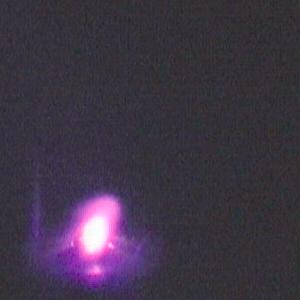 |
 |
|
(80ms) |
 |
 |
|
(120ms) |
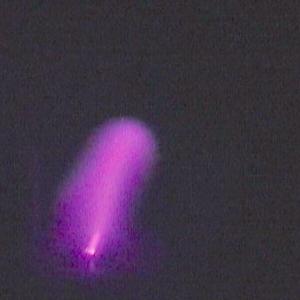 |
 |
|
(160ms) |
 |
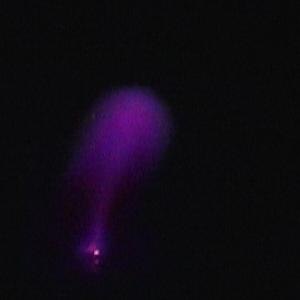 |
|
(200ms) |
 |
 |
|
(240ms) |
 |
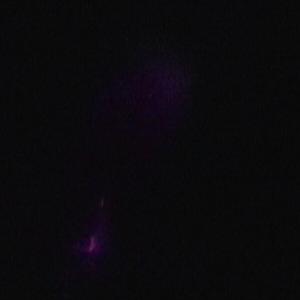 |
Another series of UV images is here.
2. Near IR observation.
|
(Time) |
|
|
|
(40ms) |
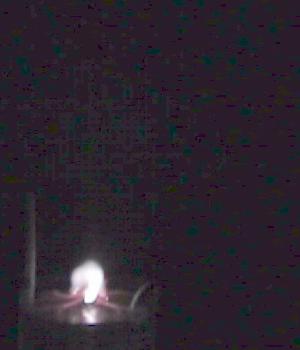 |
 |
|
(80ms) |
 |
 |
|
(120ms) |
 |
 |
|
(160ms) |
 |
 |
|
(200ms) |
 |
 |
|
(240ms) |
 |
 |
|
(280ms) |
 |
 |
3. Blue-green spectral range
images.

1 |

2 |

3 |

4 |

5 |

6 |

7 |
As can be seen on the above images, the plasma volume has tendency to splitting up, so it takes the shape of an "ear" (see frame 5) and then breaks up on 2 objects. This phenomenon can be related with the influence of the electric field of the nearby lead (left on the images) which was under high positive potential during the whole experiment (about 2kV after the current breaking). For more information on the possible EMF effects see
Next page: Some effects - guiding, branching, and splitting of the objects
![]()
| Home | Conception | Experiments | Our Publications | Related Phenomena | Ball Lightning Library | Links |